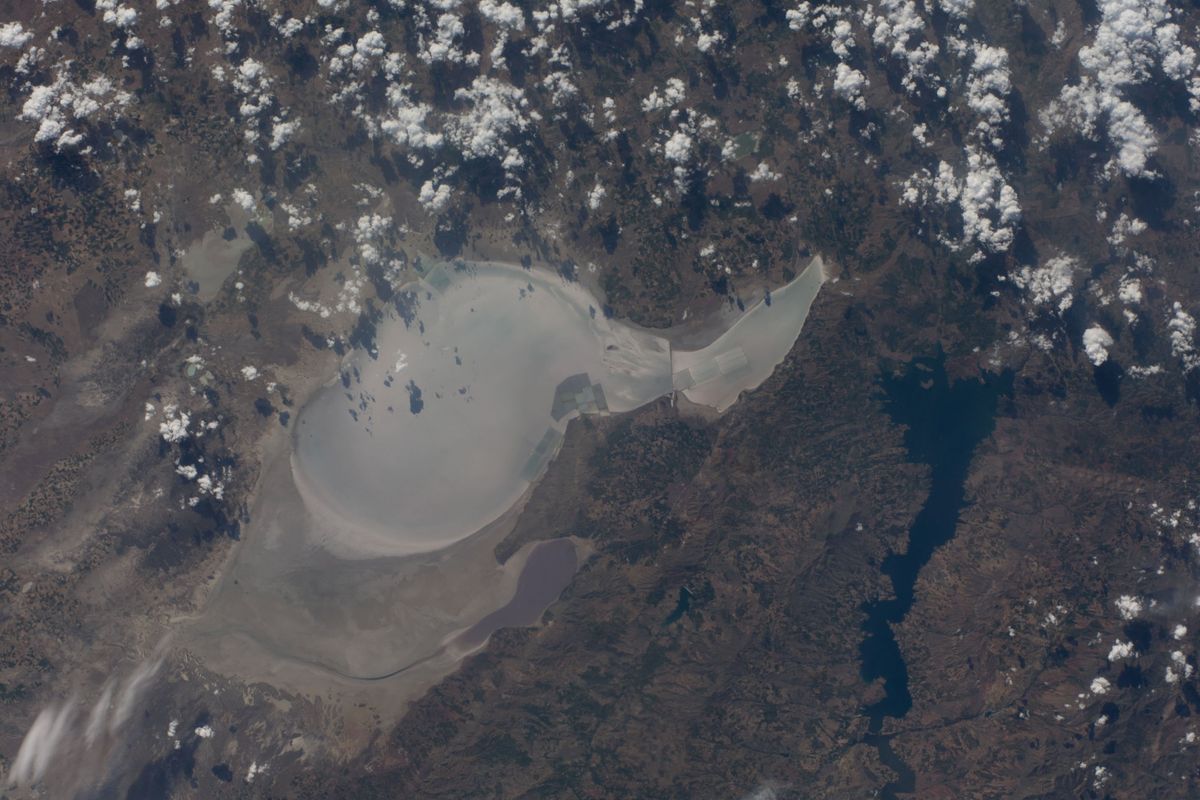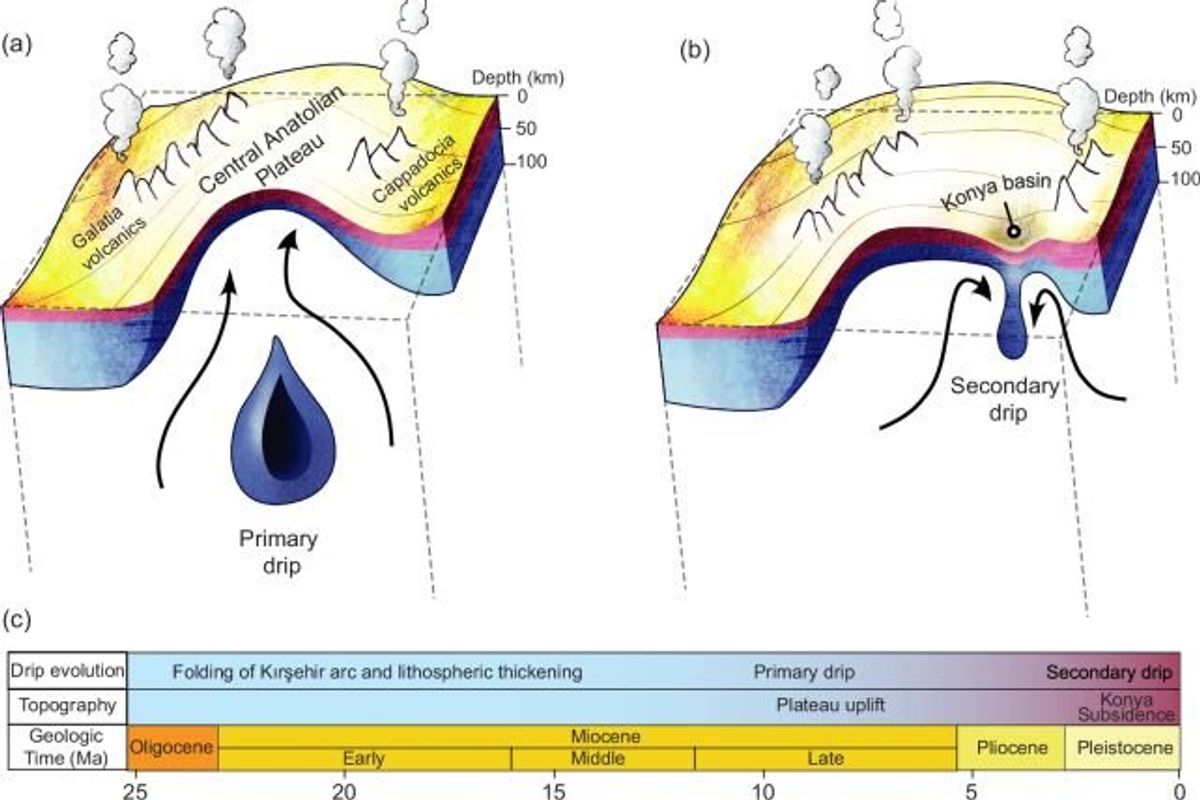Science & Tech
Harriet Brewis
Jun 19, 2025
Ten Places on Earth That Look Like They’re From Another World
Underknown - INSH / VideoElephant
Picture the Earth’s crust and you most probably think of dense, dry rock.
You don’t imagine a goey, honey-like substance trickling down into the planet’s deep underbelly.
And yet, new research has revealed that a staggering geological phenomenon is taking place beneath our feet, meaning that the crust is indeed “dripping” down in certain areas.
This is all part of a newly discovered class of plate tectonics, which could have profound and wide ranging implications for how we understand our world and other planets.
The groundbreaking study, published in the journal Nature Communications, focuses on a depression called the Konya Basin, which is located in Turkey’s Central Anatolian Plateau.
The research reveals that, beneath the basin, the Earth’s crust is gradually seeping deeper into the Earth’s interior in a newly-discovered process known as lithospheric dripping.
Scientists already have a decent grasp of how this dripping works: when the lower portion of Earth's rocky crust is heated to a certain temperature, it starts to turn viscous. Then, just like treacle or syrup, it slowly oozes downwards.
This heavy, sticky drop pulls the hard planetary crust down with it, creating a depression or basin, as Science Alert notes.
Then, when the drop detaches into the mantle, the surface bounces back up again, creating a wide bulge.

Speaking about the phenomenon in the Anatolian Plateau, geophysicist Julia Andersen of the University of Toronto, explained that she and her colleagues were looking at satellite data when they noticed a “circular feature” at the Konya basin “where the crust is subsiding or the basin is deepening”.
"This prompted us to look at other geophysical data beneath the surface where we saw a seismic anomaly in the upper mantle and a thickened crust.”
This, she said, told them that “there is high-density material there [...] indicating a likely mantle lithospheric drip."
The Central Anatolian Plateau is already known to be rising upwards. Previous research suggests that it has gained around a kilometre (0.6 miles) in altitude over the past 10 million years.
And yet, the Konya Basin is subsiding downwards at a rate of around 20 millimetres (0.8 inches) per year.
Put simply, it's strange to see a patch of land dropping in a region which is otherwise rising, meaning that further investigations are needed.
The findings from Andersen and her team’s study suggest that the broader region of the plateau remains in the rebound phase of the lithospheric drip process, having dumped a molten drop into the mantle millions of years ago.
The Konya Basin, on the other hand, is a smaller, second drip forming.
"As the lithosphere thickened and dripped below the region, it formed a basin at the surface that later sprang up when the weight below broke off and sank into the deeper depths of the mantle," Earth scientist Russell Pysklywec, also of the University of Toronto, explained of the area.
"We now see the process is not a one-time tectonic event and that the initial drip seems to have spawned subsequent daughter events elsewhere in the region, resulting in the curious rapid subsidence of the Konya Basin within the continuously rising plateau of Türkiye."

The researchers simulated this process in a lab using a sticky silicone polymer called polydimethylsiloxane to represent Earth's gooey lower mantle.
They also used a mixture of polydimethylsiloxane and modelling clay to replicate the upper mantle, and a combination of ceramic spheres and silica sand to create the crust.
They then inserted a dense "seed" into the upper mantle layer to kickstart a drip, and observed the results. Within 10 hours, the first drip had started to fall. By the time it reached the bottom of the box in which the experiment was being conducted – which took around 50 hours – a secondary drip had started to descend.
"What we noticed was that over time, this secondary drip did pull the crust downward and started to create a basin, despite no horizontal movements in the crust at the surface," Andersen said.
"The findings show these major tectonic events are linked, with one lithospheric drip potentially triggering a host of further activity deep in the planetary interior."
These results suggest that lithospheric dripping is a multi-stage process, which is why uplift and subsidence can occur at the same time on the Central Anatolian Plateau.
The scientists also acknowledged parallels with their investigation in the formation of the Arizaro Basin in the Andes Mountains of South America, suggesting that the phenomenon of lithospheric dripping can occur anywhere on Earth and, indeed, already has.
Their findings may also serve as a model for investigating similar processes on other planets, including Mars and Venus, where tectonics differ but where the underlying mantle dynamics are very similar, as Earth.com notes.
Understanding how similar processes may occur on other planets vastly expands the potential for geological research beyond our own world.
This article was first published on Sep 30, 2024
Why not read...
A chunk of the Earth's crust is missing and scientists have discovered where it is
A long-lost part of the Earth has been discovered by scientists
Sign up for our free Indy100 weekly newsletter
How to join the indy100's free WhatsApp channel
Have your say in our news democracy. Click the upvote icon at the top of the page to help raise this article through the indy100 rankings
Top 100
The Conversation (0)














